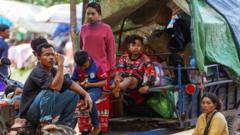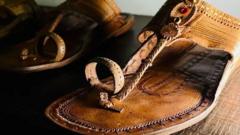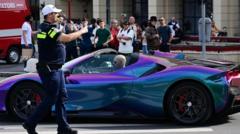In Romania, the traditional embroidered blouse, known as the "ie," has transformed into a political symbol for nationalists, igniting discussions on cultural identity and appropriation.
National Identity and Fashion: The Political Blouse Controversy in Romania

National Identity and Fashion: The Political Blouse Controversy in Romania
The traditional Romanian "ie" blouse has become a political emblem for nationalists, sparking debates over cultural appropriation.
In Romania, a seemingly simple piece of clothing is at the forefront of a heated political debate. The traditional "ie," an embroidered blouse primarily worn by rural women, has recently been embraced by far-right politicians as a symbol of national pride and cultural identity. Nationalist figures such as Diana Sosoaca have turned the blouse into a core element of their public identity, frequently donning the garment to align with traditional Romanian values.
Moreover, George Simion, a nationalist politician who recently lost a presidential election, is also a supporter of the blouse, which has gained popularity among his follower base. The blouse's significance has been further amplified by Calin Georgescu, an ultranationalist candidate who gained attention during his campaign through viral TikTok videos, featuring him in the blouse while riding a horse.
Critics argue that this appropriation of folk couture by politicians transforms the "ie" from a communal cultural symbol into a divisive political tool. As nationalist rhetoric rises, the debate surrounding the blouse poses difficult questions: Is this admiration for traditional dress a genuine celebration of national culture or a manipulation of identity for political gain? The future of the "ie" could reflect the broader societal tensions in Romania, as the line between cultural pride and appropriation blurs.
Moreover, George Simion, a nationalist politician who recently lost a presidential election, is also a supporter of the blouse, which has gained popularity among his follower base. The blouse's significance has been further amplified by Calin Georgescu, an ultranationalist candidate who gained attention during his campaign through viral TikTok videos, featuring him in the blouse while riding a horse.
Critics argue that this appropriation of folk couture by politicians transforms the "ie" from a communal cultural symbol into a divisive political tool. As nationalist rhetoric rises, the debate surrounding the blouse poses difficult questions: Is this admiration for traditional dress a genuine celebration of national culture or a manipulation of identity for political gain? The future of the "ie" could reflect the broader societal tensions in Romania, as the line between cultural pride and appropriation blurs.


















